Pure water boils at 373.15K and nitric acid boils at 359.15K. An azeotropic mixture of H2O and HNO3 boils at 393.15K. Distilling the azeotropic mixture will cause
pure water to distil over first
pure nitric acid to distil over first
one of them to distil over with a small amount of the other.
both of them to distil over in the same composition as that of the mixture being distilled.
The correct Answer is:4
Azeotropes are binary mixture (nonideal solutions) which have the same composition in liquid and vapour phase and hence boil at a constant temperature. In such cases, it is not possible to seprate the components.
Topper's Solved these Questions
- BOOK - R SHARMACHAPTER - SOLUTIONSEXERCISE - FOLLOW-UP TEST 115videos
SOLUTIONS
- BOOK - R SHARMACHAPTER - SOLUTIONSEXERCISE - FOLLOW-UP TEST 125videos
SOLUTIONS
- BOOK - R SHARMACHAPTER - SOLUTIONSEXERCISE - FOLLOW-UP TEST 99videos
SOLUTIONS
- BOOK - R SHARMACHAPTER - SOLID STATEEXERCISE - Archives28videos
SOLID STATE
- BOOK - R SHARMACHAPTER - STEREOCHEMISTRYEXERCISE - Archives17videos
STEREOCHEMISTRY
Similar Questions
Mixture of HNO3 and HCl is an example of maximum boiling point azeotrope.
View Solutionrepresents the distillation of mixture of liquid A and liquid B which gives both of pure liquid A and B . Represents the azeotropic mixture of HNO3 and H2O which distillation gives an azeotropic mixture and either of pure liquid. We cannot separate both the pure liquid, i.e., H2O and HNO3.
What is the result of distilling a mixture of 80%HNO3 and 20%H2O?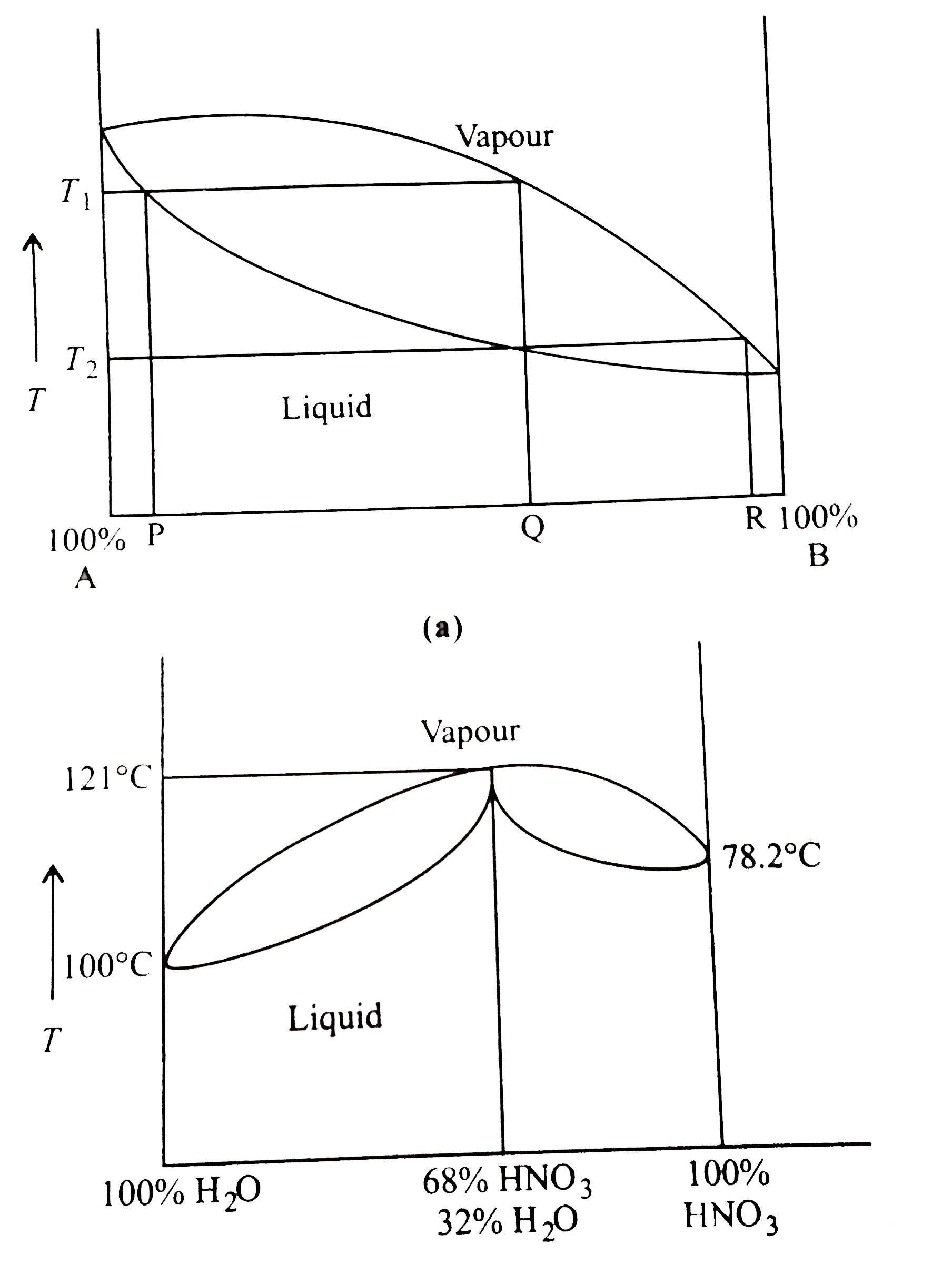 View Solution
View Solution
Knowledge Check
- Question 1 - Select One
Pure water boils at 373 K and pure nitric acid boils at 359 K. The azeotropic mixture of water and nitric acid boils at T.K.
AT<359KBT>359KCT<373Kbut>359KDUnpredictable - Question 2 - Select One
Azeotropic mixture of water and C2H5OH boils at 351 K. By distilling the mixture it is possible to obtain
Apure C2H5OH onlyBPure water onlyCNeitherC2H5OH nor waterDBoth water and C2H5OH in pure state - Question 3 - Select One
Azeotropic mixture of water and HCl boils at 381.5 K. By distilling the mixture it is possible to obtain-
APure HCl onlyBPure water onlyCNeither HCl nor waterDBoth water and HCl in pure state
represents the distillation of mixture of liquid A and liquid B which gives both of pure liquid A and B . Represents the azeotropic mixture of HNO3 and H2O which distillation gives an azeotropic mixture and either of pure liquid. We cannot separate both the pure liquid, i.e., H2O and HNO3.
What is the result of distilling a mixture of 50%HNO3 and 50%H(2)O ?
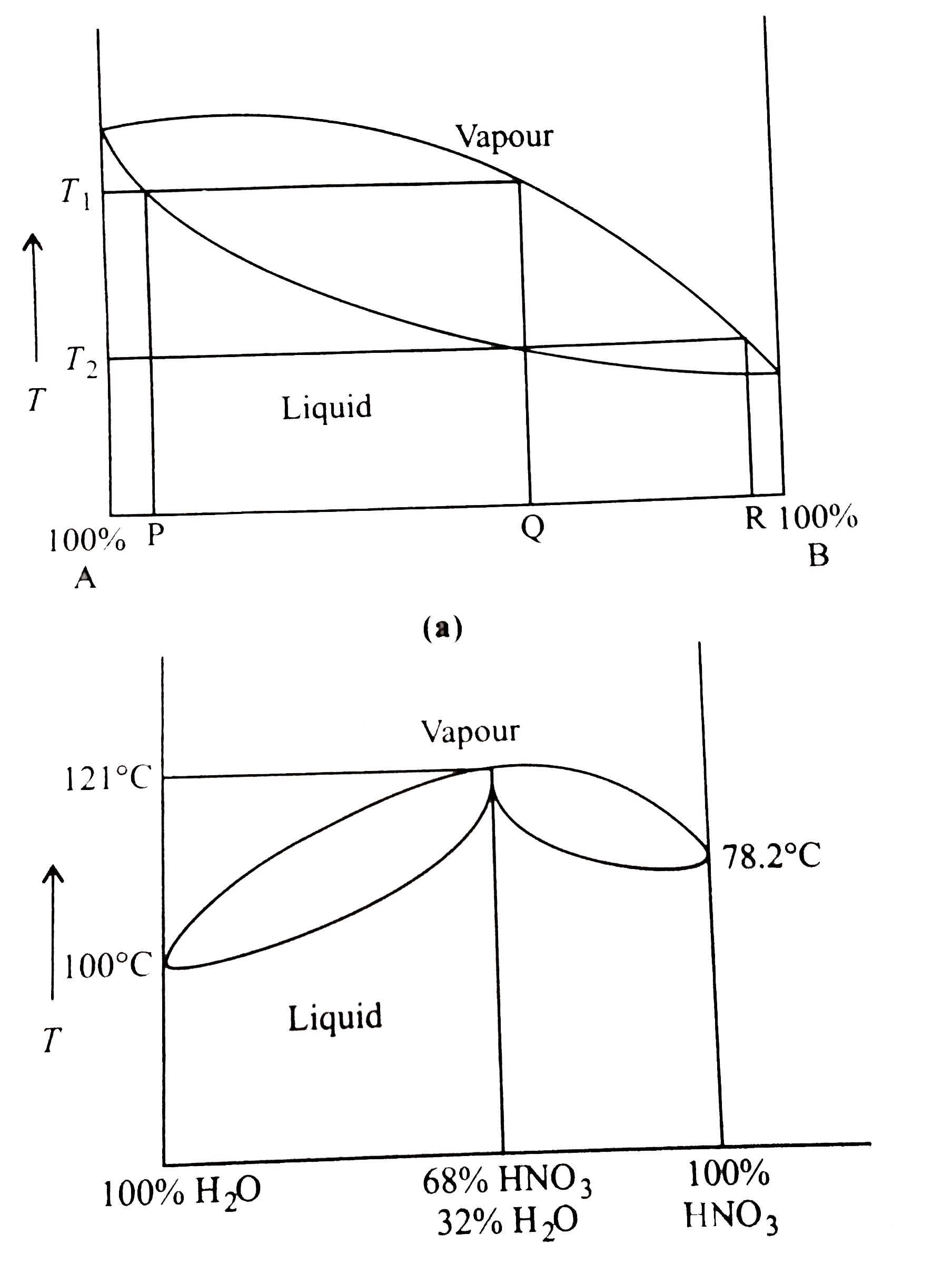 View Solution
View Solutionrepresents the distillation of mixture of liquid A and liquid B which gives both of pure liquid A and B . Represents the azeotropic mixture of HNO3 and H2O which distillation gives an azeotropic mixture and either of pure liquid. We cannot separate both the pure liquid, i.e., H2O and HNO3.
a solution of 50% of B on distillation results into
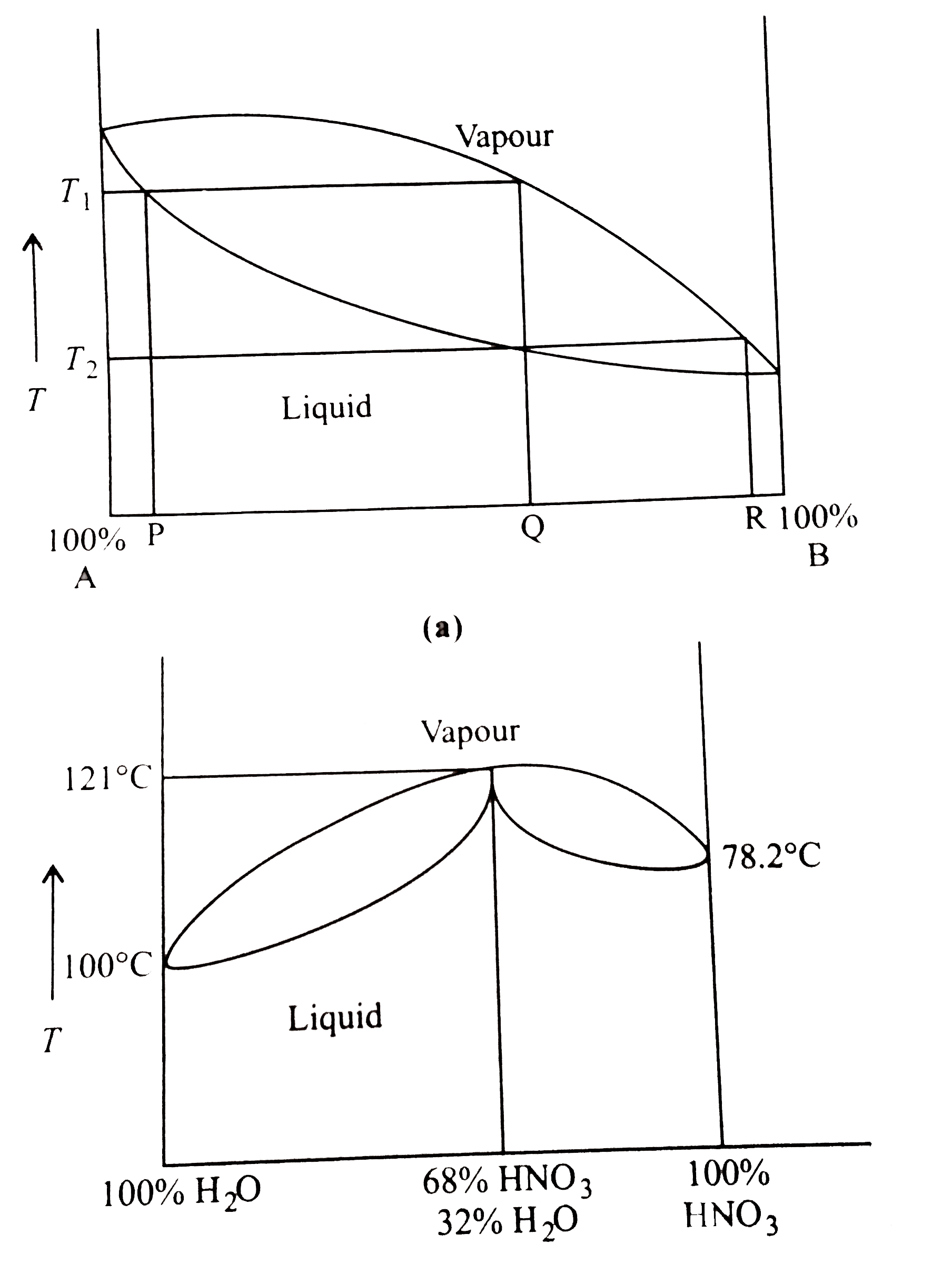 View Solution
View Solutionrepresents the distillation of mixture of liquid A and liquid B which gives both of pure liquid A and B . Represents the azeotropic mixture of HNO3 and H2O which distillation gives an azeotropic mixture and either of pure liquid. We cannot separate both the pure liquid, i.e., H2O and HNO3.
At temperature T1 and composition Q, which of the following is true?
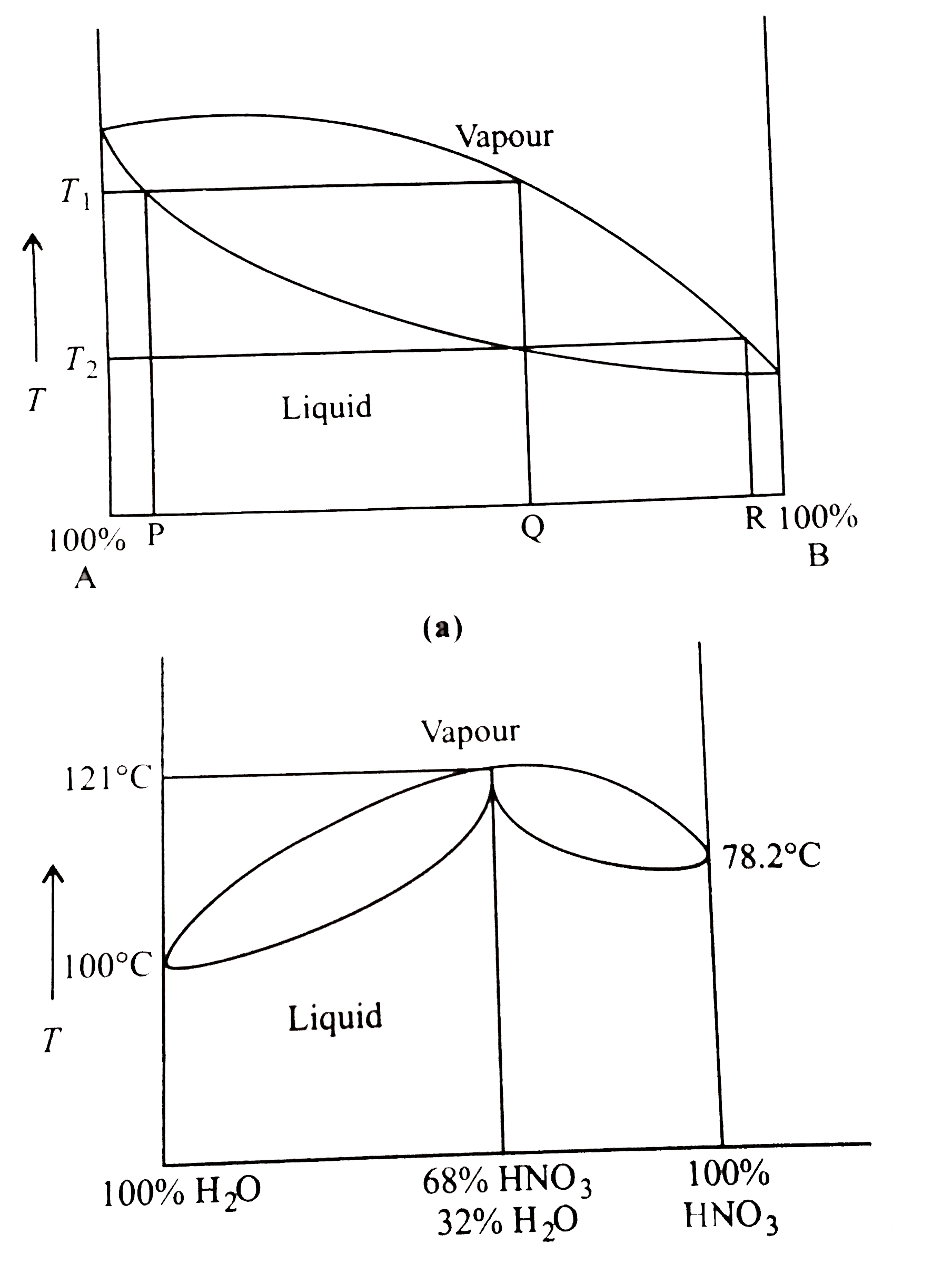 View Solution
View SolutionThe azeotropic mixture of water and HCl boils at 108.5∘C. When this mixture is distilled, it is possible to obtain
View Solutionrepresents the distillation of mixture of liquid A and liquid B which gives both of pure liquid A and B . Represents the azeotropic mixture of HNO3 and H2O which distillation gives an azeotropic mixture and either of pure liquid. We cannot separate both the pure liquid, i.e., H2O and HNO3.
Which of the following statements is/are correct?
i. HNO3 solution is not obeying the Raoult's law.
ii. More the difference in vapour pressure of pure compounds forming a mixture, easier to separate them through distillation.
iii. T2 is less than T1 because the liquid of composition Q is richer in more volatile component.
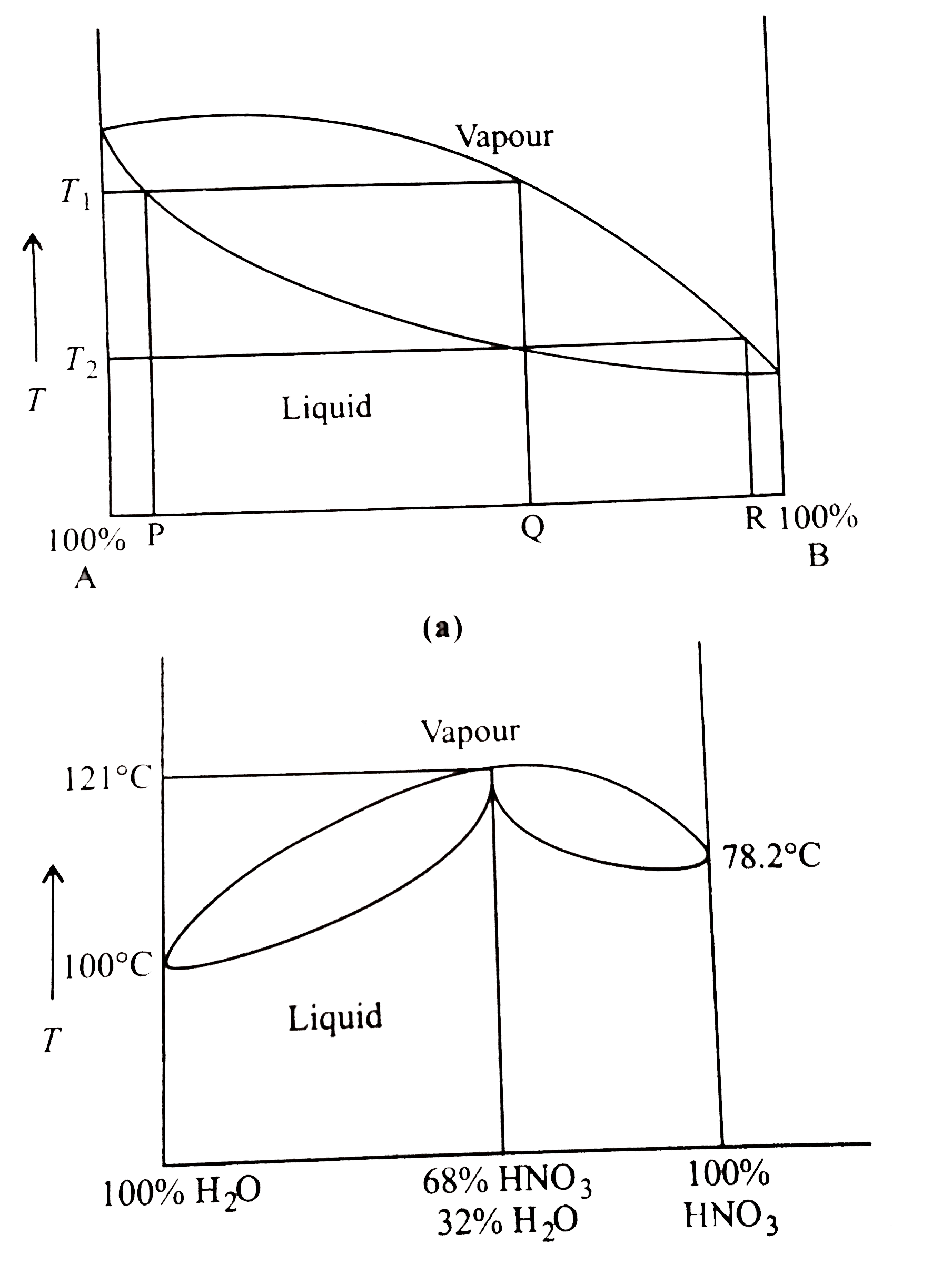 View Solution
View Solution

